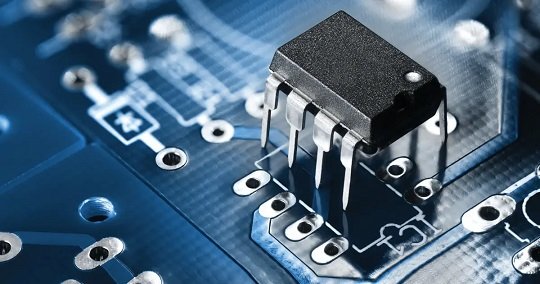Introduction
In the ever-evolving world of electronics manufacturing, two primary methods of component assembly stand out: SMT and, through-hole technology. All have features and properties that make the difference with each having its strengths and weaknesses. Discovering the details of the popular technologies discussed here, we will discuss how they affect the world of contemporary electronics and the decision-making process of producing PCBs.
Understanding the Basics
Before delving into the contrast, let us clarify the meaning of each technology:
- Surface Mount Technology (SMT)
SMT entails placing components on the surface of the PCB and soldering them. These components which are called Surface Mount Devices (SMDs) have small metallic ends or balls that solder to copper pads on the surface of the Board.
- Through-Hole Technology
In through-hole assembly, the component leads are passed through those holes which have been drilled into the PCB and soldered on the other side. This leads to the development of a strong mechanical interlocking between the component and the board.
The Rise of SMT
Even though through-hole technology ruled the field of electronics for many years, SMT has grown in popularity since the 1980s. Let’s investigate the causes of this change:
1. Miniaturization
SMT also makes it possible to realize components that are quite small in size thus improving the miniaturization of the gadgets. This has been evident in the manufacturing of Smartphones, wearables, and other portable electronic gadgets.
2. Increased Component Density
SMT has the advantage of putting the components near each other which enables more components to be fitted on the same PCB surface. This not only results in decreased size of the board but also improves the performance by shortening the signal path.
3. Automated Assembly
It is also very suitable for use in automated assembly procedures since it stands for automated production. By using pick-and-place machines, it is easier and much quicker to accurately place the SMD components hence enhancing the speed of production.
4. Lower Production Costs
It should be noted that SMT components could sometimes be less costly than through-hole components, nevertheless, the general cost of production is relatively less because of quicker assembling and less manual intervention.
5. Improved Performance
While compared with the conventional SMT components, they usually possess lower parasitic capacitance and inductance because of their size and the length of the leads. This can lead to improved performance in high-frequency applications among other benefits.
The Enduring Relevance of Through-Hole Technology
Even with SMT’s benefits, through-hole technology is still applicable and desirable in some situations:
1. Mechanical Strength
Through-hole components offer better mechanical connections with the PCB hence recommended for areas that may experience much stress or vibration for instance automobiles and some industrial uses.
2. High-Power Applications
Many high-power components are presently comprehensible in the through-hole package since they can provide efficient heat and voltage distribution.
3. Prototyping and Small-Scale Production
Through-hole models are usually easier to place by hand and therefore preferred for one-off or low-volume production and prototype designs.
4. Reliability in Extreme Conditions
Initially, while using through-hole connections can be problematic in applications with rapid temperature changes, they are less so because of the tighter mechanical bond.
5. Ease of Rework and Repair
Through-hole components are normally easy to replace or require reworking which can be beneficial for products that may need field repairs or modifications.
Comparing SMT and Through-Hole: Key Factors
Let’s discuss the comparison ie, SMT vs through hole based on several important criteria:
1. Component Size and Board Real Estate
- SMT: Enables part to be much smaller and much higher part packing density.
- Through-Hole: Consumes more board space because of the big size of the components and the holes that are drilled into the board.
2. Assembly Process
- SMT: Completely automated, efficient to assemble cars quickly and it is good to produce a large number of cars.
- Through-Hole: Some of them can be automated but in most cases, it requires more manual operations and slower rates of assembling.
3. Soldering Methods
- SMT: Generally, it employs reflow soldering where the whole board is heated to melt the solder paste.
- Through-Hole: This can include wave soldering, or more often the part’s solder is manually soldered into place.
4. Mechanical Strength
- SMT: An acceptable level of strength in most applications but not so good in places where stress is high.
- Through-Hole: Even better for mechanical competence ideal for rough environments.
5. Thermal Management
- SMT: This may present difficulties for high-power components because their size does not allow for providing adequate heat dissipation.
- Through-Hole: Sometimes more suitable for high power because through-hole parts are capable of shedding heat in a much better way.
6. Electrical Performance
- SMT: In most cases provides superior performance in high-frequency applications due to smaller lead lengths and lesser amount of parasitic inductance.
- Through-Hole: This may be suboptimal in high-frequency signals and functions besides that it is generally satisfactory.
7. Prototyping and Rework
- SMT: Typically more difficult to prototype and more difficult to manually rework which may require certain tools and equipment.
- Through-Hole: Easy to create and revise using simple equipment and tools hence widely preferred for home-based or small-scale uses.
8. Cost Considerations
- SMT: Less initial investment and higher per unit cost in the low production volumes while high initial investment and lower per unit costs in the high production volumes.
- Through-Hole: Less expensive equipment at the start of the process but more expensive in the assembly since the process takes more efforts of labor.
The Hybrid Approach: Combining SMT and Through-Hole
A hybrid method that makes use of the advantages associated with SMT and through-hole methods is used in many contemporary PCB designs. This method is very popular for designs that need to:
- About 80% of through hole components and 20% of SMT components for power supply or connectors etc.
- The incorporation of through-hole components for areas that could likely to be removed or replaced or upgraded.
- Addressing performance requirements along with manufacturing constraints, especially, in areas where some of the sophisticated SMT equipment is not easily accessible.
Conclusion
The decision between SMT and through-hole technology is not straightforward. Despite certain drawbacks, through-hole technology is still used in certain applications where it is needed; however, SMT has practically become dominant in the electronics manufacturing industry due to its advantages of miniaturization and high production rates.
Electronics designers and manufacturers must comprehend the advantages and drawbacks of each kind of technology. The size, mechanics, heat dissipation, as well as order of production, serve as crucial factors that designers need to consider when deciding whether to use a specific or integrate both technologies.
Looking into the future, it seems that both SMT and through-hole technologies will continue to be necessary for the creation of electronics due to their versatility and value in addressing contemporary market needs and providing optimal solutions to the development of electronic devices. The choice resides in the particular technology or combination of technologies that best meet the requirements of the application at hand, assuring the final product delivers high performance, dependable service, and is economical.


